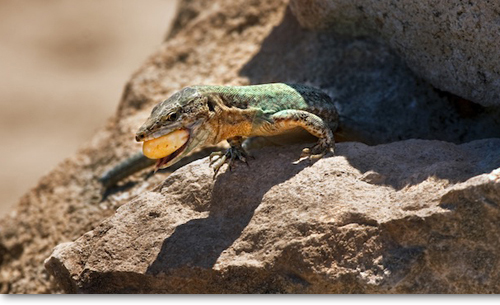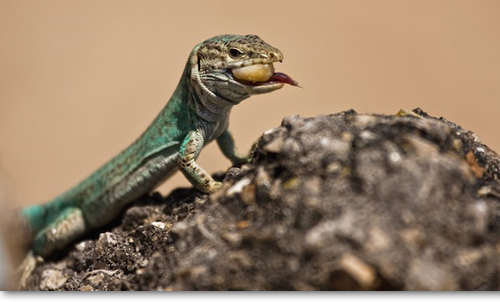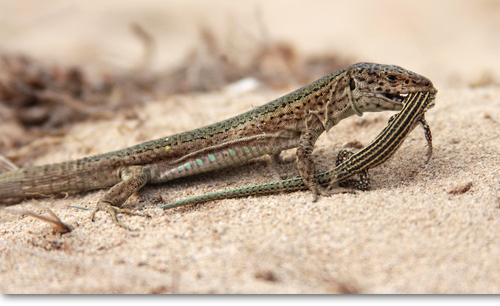|
Small islands are hard places to survive. Especially in the Mediterranean, where water and foods are scarce. Any organisms that happen upon an island need to adapt fast or they’ll perish. The insular lizard populations of the Mediterranean have made a name for themselves in this realm. While their mainland relatives depend almost entirely on insects, island lizards have evolved to be omnivorous. They will eat just about anything – from fruits and leaves to insects and fish. This adaptation may not seem very impressive at first, but the physiological changes necessary to eat a wide variety of food are not few. If you compare the jaw muscles, internal physiology, behavior, and most likely the visual systems of island and mainland lacertid lizards, you’ll find that island lizards have acquired some clever adaptations which allow them to exploit the resources they need to survive in such harsh environments.
On many islands resources are so scarce and competition is so high that it’s not uncommon to see lizards eating their own eggs, or one another! During my stay on Formentera from April till August 2010, I caught these two male lizards eating eggs of their own species (see imgages 1-2). Since I captured these, I’ve seen six or seven cases of cannibalistic egg eating and one case of a large male eating a juvenile whole (tragically, I didn’t have my camera for that one). If, at first, this seems distasteful, just look at what happened to various island populations of humans, especially in the South Pacific (or the Donner Party for another example).

Img. 1. male Podarcis pityusensis formenterae eating egg.

Img. 2. another male Podarcis pityusensis formenterae doing the same.

Img. 3. Formentera and surrounding islands.
|
|
Begin August I swam out to a small island called Torreta to sample the lizard population.¬Ý Torreta is an island of the north west coast of Espalmador (see image 3) and is home to a putative subspecies of the Ibiza Wall Lizard Podarcis pityusensis torretensis (Surprisingly, the lizards on Torreta, which is less than 100m from Espalmador, are morphologically quite different from the subspecies found on Espalmador). I have been making an effort to carry my camera with me at all times in the field, in the case that something special occurs. Something exciting did happened. I spotted an adult male with a juvenile in its mouth (see imgages 4-8). Enjoy!

Img. 4. male Podarcis pityusensis torretensis predating on juvenile.

Img. 5. same Podarcis pityusensis torretensis predating on juvenile.

Img. 6. same Podarcis pityusensis torretensis predating on juvenile.

Img. 7. same Podarcis pityusensis torretensis predating on juvenile.

Img. 8. same Podarcis pityusensis torretensis predating on juvenile.
|



